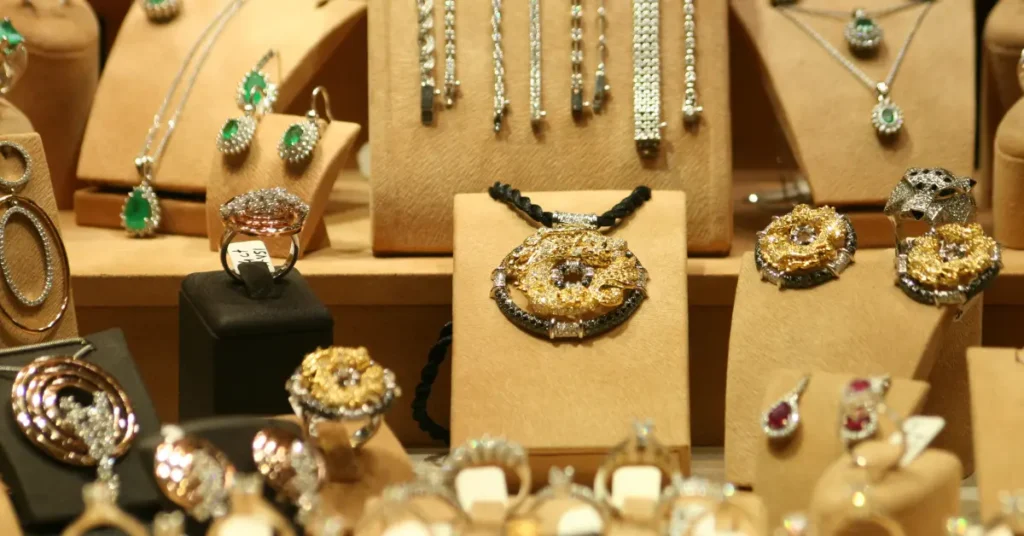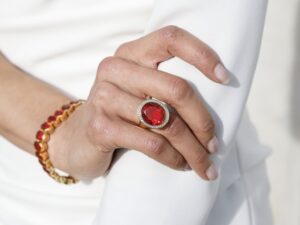Jewelry has always been more than just decorative pieces; it is an enduring form of art, culture, and history. From ancient civilizations to modern times, jewelry has been used to signify status, celebrate love, and express individual style. This timeless tale traces the origins of jewelry, its evolution through the centuries, and the craftsmanship behind its creation.
The Origins of Jewelry
Jewelry dates back to the earliest known human civilizations. Archaeological evidence shows that ancient people used shells, bones, stones, and animal teeth as adornments, often to signify tribal affiliations or social status. The Egyptians, renowned for their love of beauty, are credited with advancing jewelry making as an art form. Gold, gemstones, and intricate designs became symbols of wealth and power, especially in burial tombs where jewelry was placed with the dead as offerings to the gods.
As civilization evolved, so did the materials and techniques used to create jewelry. The Greeks and Romans made significant contributions to jewelry design, introducing techniques like filigree and gem setting. Gemstones became an integral part of jewelry, with the Romans favoring emeralds, diamonds, and pearls. They believed that gemstones held mystical powers, which further elevated the status of jewelry.
The Evolution of Jewelry Styles
During the Middle Ages, jewelry took on religious significance, with Christian symbols like crosses and saints’ medallions being popular. By the Renaissance, jewelry had become more personal, with people commissioning custom pieces to reflect their identity. This period also saw the introduction of more elaborate gemstone cutting techniques, which enhanced the brilliance of diamonds and other precious stones.
The 18th and 19th centuries brought about a shift toward more romantic and nature-inspired designs. Art Nouveau and Art Deco movements led to the creation of some of the most iconic jewelry designs in history. The use of platinum, diamonds, and colored gemstones reached new heights, while designers like Cartier and Van Cleef & Arpels revolutionized the world of high jewelry.
In modern times, jewelry continues to evolve, blending traditional techniques with innovative technologies. Today’s designers often use 3D printing, computer-aided design (CAD), and sustainable practices to create unique pieces that reflect contemporary aesthetics.
The Craftsmanship Behind Jewelry
Jewelry making is both an art and a science. It involves a combination of skills, tools, and techniques passed down through generations. The first step in creating a piece of jewelry is designing it. Jewelry designers often draw inspiration from nature, culture, and personal experiences, sketching out their ideas before beginning the fabrication process.
Once the design is finalized, the jeweler selects the materials — gold, silver, platinum, or alternative metals like titanium, along with gemstones or pearls. The crafting process involves several steps, including:
- Casting: This involves creating a mold of the jewelry piece, which is then filled with molten metal to form the base.
- Soldering: Small sections of metal are joined together using heat and flux.
- Stone Setting: Precious stones are set into the metal, often requiring delicate precision to secure them without damaging the stone.
- Polishing: The piece is polished to achieve a high-quality finish, bringing out the shine of the metal and stones.
- Final Inspection: The piece undergoes a final inspection to ensure it meets quality standards before being sold to the customer.
Jewelry making requires patience, skill, and attention to detail. Each piece is a labor of love, carefully crafted to create something truly unique.
FAQ: Common Questions About Jewelry
1. What are the different types of jewelry metals?
- The most common metals used in jewelry include gold (yellow, white, and rose), silver, platinum, and palladium. More modern metals like titanium and tungsten are also gaining popularity due to their durability.
2. How do I know if a gemstone is real?
- Genuine gemstones have certain characteristics like hardness, weight, and refractive index. You can test gemstones for authenticity through professional gemological testing, or by examining their unique qualities with a jeweler’s loupe.
3. Why is gold so valuable?
- Gold is valuable because it is rare, durable, and resistant to tarnish. It has been used as currency and a store of value for thousands of years. Its scarcity and aesthetic qualities make it a highly coveted material in jewelry.
4. How do I care for my jewelry?
- To keep your jewelry in good condition, avoid exposing it to harsh chemicals, perfumes, or chlorine. Clean your jewelry with a soft cloth, and store it in a safe place away from other jewelry to avoid scratches. Regular professional cleaning is also recommended.
5. What is the difference between 14k, 18k, and 24k gold?
- The “k” in gold refers to its purity. 24k gold is pure gold, while 18k gold contains 75% gold and 25% other metals, and 14k gold contains 58.3% gold. Higher karat gold is softer and more prone to scratching, while lower karat gold is more durable but less pure.
6. How can I ensure my jewelry is ethically sourced?
- Look for certifications like Fairmined, which ensure that the gold and gemstones used in your jewelry are ethically sourced, meaning they come from mines that adhere to fair labor practices and environmental sustainability.
Conclusion
The tale of jewelry is not just about adornment, but a reflection of human history, culture, and creativity. From ancient civilizations to the modern-day, jewelry continues to evolve, blending tradition with innovation. Understanding the craftsmanship and significance behind these timeless pieces enhances our appreciation for the artistry that goes into creating every gem, metal, and design.
Whether a simple silver ring or a diamond-studded necklace, jewelry remains an enduring symbol of beauty, expression, and history. For expert advice on jewelry or to purchase beautifully crafted pieces, feel free to reach out to VY Domingo. Their expertise in the field ensures you make the right choices, whether you’re looking for a piece to mark a special occasion or seeking guidance on jewelry care and selection.





